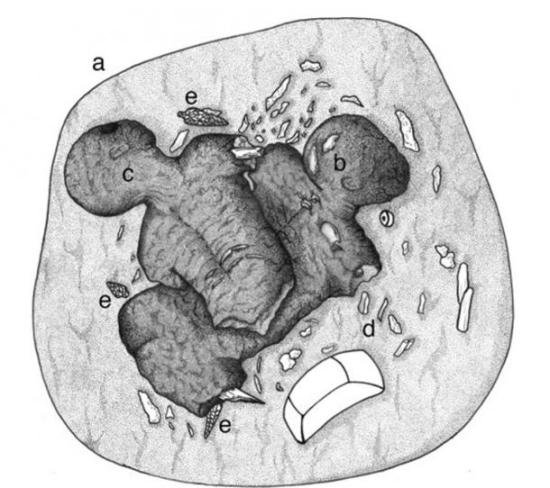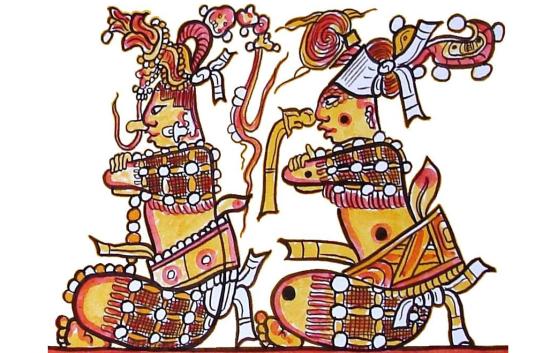Interpreting a Cremated Double Burial
Oswaldo Chinchilla, Mazariegos, Vera Tiesler , Oswaldo Gómezand T. Douglas Price
Source - http://journals.cambridge.org/action/displayAbstract?fromPage=online&aid=9586399&fileId=S0959774314000638

Artist’s reconstruction of Burial PP7TT-01: (a) outline of cremation pit; (b) Individual 1B; (c) Individual 1A; (d) sherd fragment; (e) obsidian points. (Drawing: Belem Ceballos)
Abstract
Human sacrifice in ancient Mesoamerica was strongly linked with ritual behaviour and mythical beliefs. Yet it is rarely possible to explain the mythical associations of archaeological deposits derived from human sacrifice. In this article, we integrate archaeological, taphonomic and isotopic analysis to reconstruct the ritual behaviour that resulted in the formation of a partially cremated primary burial at the Lowland Maya city of Tikal. Taphonomic reconstruction reveals details about the form of death and combustion of two males, while isotopic studies hint at their probable geographic origin. To explain this ritual, we assess the relevance of widespread Mesoamerican mythical beliefs about the origin of the sun and the moon, and discuss the theoretical and methodological issues involved in this comparison. The burial's association with an E-Group compound makes it significant for the interpretation of these specialized architectural arrangements in southern Mesoamerica. It also pertains to a critical period in Tikal's history, marked by intensified cultural and political interaction with the highland Mexican city of Teotihuacan, manifest in this burial by the presence of imported green obsidian spear points. We propose that this unique context resulted from a sacrificial reenactment of the mythological birth of the sun and the moon.

The immolation of the hero twins, known from the Popul Vuh and other narratives, may have been re-enacted in the fifth-century AD Maya city of Tikal. The twins in this image were drawn from an ancient Maya ceramic piece. (Lacambalam / Wikimedia Commons)